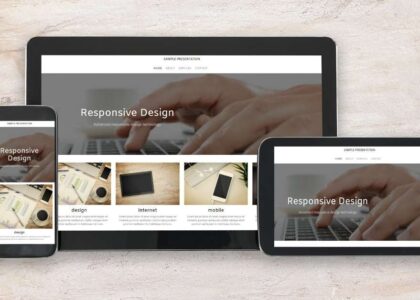Is it time to redesign your website?
Perhaps, you’re not getting the most out of your blog content strategy and would like to revamp to keep up with competitors. It could also be that, in light of rebranding, there’s a need to update your site’s theme to reflect the change.
There are many important reasons for you to redesign your website.
However, most of the time it usually boils down to a non-ideal user experience that you’d like to improve. Perhaps due to complaints from your customers, you’ve come to the decision that it’s about time to schedule a redesign.
Whatever the reason for your overhaul, it can get confusing trying to work out what to consider when redesigning a website.
There are so many factors at play, from big concerns such as your host platform to the little yet vital details like your logo, and it can get overwhelming.
In this article, we’ll be talking about important things to consider before redesigning your website.
Let’s get started.
1. SEO Performance
Will a redesign mean losing all that hard-earned SEO work?
If you’re considering a website redesign, I’ll go out on a limb here and assume that this is not your first rodeo as far as search engine optimization is concerned.
With Forbes research estimating that it can take up to 6 months for SEO results to surface, you’ll certainly not want to jeopardize them in any way.
Countless weeks and even months down the line, you’ve created impressive SEO standings and your pages are wooing Google’s algorithms, and you’d like to keep it that way.
So before you begin any changes whatsoever, it’s prudent to squeeze in an SEO website audit into your list of what to consider when redesigning a website.
Specifically, take a look at which pages:
- Drive the most traffic
- Have the best lead conversion rates
- Cover colossal niche topics
A good website analytics tool can help you out with these statistics.
Once you have your high-value pages figured out, you’ll need to implement the proper 301 redirects to ensure you don’t lose your traffic and link value.
Some popular redirection WordPress plugins you could use include 301 Redirects, Redirection, and Safe redirect manager, among many others.
EasyCash is a great example of why an SEO site audit is among the most important things to consider when redesigning a website.
After the audit, the company identified technical aspects like bad links that were getting in the way of their redesign success.
The eCommerce business solved the issues with 301 redirects among other fixes and, as a result, there was a 25% spike in the company’s web sessions.
2. Logo Design
Do your customers like your logo?
A survey by Promotique established that 2,000 Americans state that your business logo has a huge say on their purchase choices.
In particular, 6 in 10 of your leads WON’T buy from you, even if you have excellent reviews, as long as your brand logo feels unattractive.
How do you make your logo great again?
A logo update is therefore among the most vital things to consider when redesigning a website because it is a reflection of your brand.
Generally, though, you’d want to stick to warm, inviting logo colors, with blue amongst the most popular, although there are exceptions.
Let’s consider the case of photo editing service Ribbet that underwent a logo redesign with tremendous success.
The company was able to capture its unique personality for the brand, which went a long way in helping it amass the over 51,000 monthly traffic it enjoys today.
With the design team spending weeks on Ribbet’s project, it’s clear enough that getting the right balance and mix of logo elements can be challenging.
Therefore, you could choose to invest in our professional logo design services so you don’t have to worry too much about what to consider when redesigning a website logo.
We’ll capture your unique brand voice and vision, mix it up with our boundless expertise and creativity, then serve you a logo guaranteed to blow away your customers.
3. Website Host Downtime
Is it time to change your website host?
Perhaps you’re experiencing way too much downtime than you’d like and the culprit is none other than your content management platform of choice.
Several Fortune 500 companies each endure over 96 minutes of downtime every seven days, according to a Dun & Bradstreet study. This further enforces why host downtime is among the most important things to consider before redesigning your website.
Remember every time your website is unavailable even for the slightest moments, your business is missing out on countless leads and your competitors are capitalizing to build a loyalty chain for themselves.
So as you prioritize what to consider when redesigning a website, don’t forget to perform an evaluation of your website host.
As a primary factor, you’ll be analyzing your monthly downtime.
In an ideal world, you should be aiming for a web host solution with 100% uptime. Unfortunately, that’s not possible because of IT management issues such as crashes, system overloads, and upgrades, among others.
The general rule of thumb though is to aim for a website hosting solution with an uptime of above 99.90%, which would equate to a yearly downtime of approximately 8 hours, 45 minutes, and 36 seconds. Also, you may need to contemplate a dedicated hosting plan.
That said, here’s a case study on various web hosting uptimes, to help you make an informed decision.
The study compiles the average uptimes, including periods of outages, for 32 web host platforms across a 12-month duration.
4. Competitor Analysis
Do your competitors have higher-performing websites?
As you ponder on what to consider when redesigning a website, your highly successful competitors can offer a good frame of reference.
Without proper competitor analysis, you won’t have an idea of functional and design attributes that are making a difference for them. Moreover, you may lag behind on niche trends and best practices.
That said, you’ll not want your site to be a copycat of another and lose your brand authenticity.
Speaking of which, you might also want to read up on why you should invest in our professional web design service to get a website that’s:
- Unique
- Reliable
- SEO-friendly
For comprehensive competitor analysis, there are tons of free digital marketing tools that you could use.
To get an idea of competitor backlinks so that you can reverse engineer their tactics, you can use tools such as LinkMiner and CleverStat.
In a nutshell, you want to get ideas for new functionality and features, and what to avoid, as you map out crucial things to consider when redesigning a website.
The importance of proper competitor and market analytics is evident in the website redesign undergone by Archaeology Southwest a while ago.
This archaeology practice was able to improve not only its web navigation and general user experience but also increase lead conversions through the better placement of contact forms and CTAs at large.
5. CMS Responsiveness
What content management system (CMS) do you rely on?
No matter what content management system you use, there’s one important aspect that should be among your list of what to consider when redesigning a website: responsiveness.
According to a Google survey, 48% of your leads consider your business uncaring if your website doesn’t work well on smartphones, with even more saying they are unlikely to engage with your business if that’s the case.
So if you aren’t optimizing for various screen sizes and devices, you’re not only locking a huge percentage of mobile readers but also hurting your company’s reputation.
So you’ll want to carry out responsive testing to figure out corrective action.
You could do this the long way by accessing your site via different devices, or through the use of responsive testing tools like Screenfly, Responsinator, and Google DevTools.
Previously reliant on a separate mobile website, one digital agency improved its web loading speeds across a flurry of devices, by factoring in how their CMS affected site responsiveness.
The agency ditched their CMS, among other measures, using it only to manage their blog, which catapulted processing speeds on the homepage to 56 milliseconds from a previous 2.2 seconds.
That said, a CMS is not always to blame for your website’s responsiveness issues.
Sometimes the problem traces down to poorly optimized images and complicated UI elements. Because there’s a whole lot of other responsive things to consider when redesigning a website, you’d best be served to leave it up to our team of WordPress developers for an all-around responsive redesign.
We achieve responsive designs through conditional loading, image optimization, and many other expert strategies.
Conclusion
Did you know you should redesign every 2 years?
Well, your website has a shelf life of about 2 years and 7 months, going by an Orbit Media survey, which further emphasizes the need to know the important things to consider before redesigning your website.
While it’s not a hard and fast rule, the point is you should regularly revamp your website because design trends, content strategies, and technology evolve. The nature of your customer’s devices changes at lightning speed, and it’s a constant battle to stay in touch with the times.
In a nutshell, there’s much to think about on what to consider when redesigning a website.
Click here to talk to our web development team for expert redesign help.
We’ll customize your brand theme, create an excellent logo, and even help you figure out a profitable content marketing strategy going forward.





